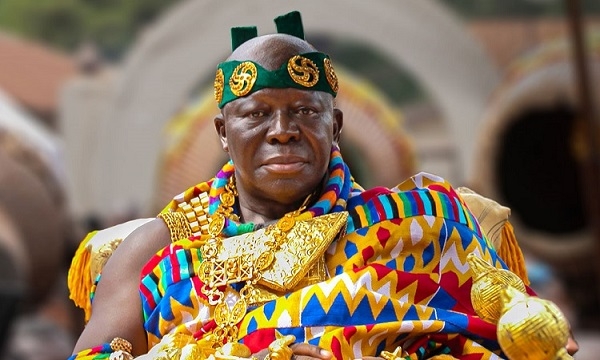Dow Jones Today: Stock Futures Little Changed as Market Aims to Rebound From Sell-Off; Bitcoin Hits Record High Near $112,000
Major stock indexes moved higher in early-afternoon trading Thursday, recovering from the steep declines posted yesterday amid mounting concerns about the federal deficit as a budget bill works its way through Congress.
The Dow Jones Industrial Average and S&P 500 were each up 0.2% recently, while the tech-heavy Nasdaq Composite added 0.7%. Stocks tumbled on Wednesday while bond yields soared as investors monitored developments on a GOP tax and spending proposal that is expected to dramatically increase the deficit and reacted to a weaker-than-expected auction of Treasury bills.
Early this morning, President Donald Trump's "One Big Beautiful Bill" narrowly passed in the House of Representatives, and it will now head to then Senate. Investors are focused on the deliberations in Congress amid worries about how the budget bill will affect an already unsustainable fiscal situation.
The yield on the 10-year Treasury note, which directly affects borrowing costs on all sorts of consumer and business loans, rose sharply this morning, hitting its highest level since mid-February, but then retreated. The yield was recently at 4.55%, down from 4.60% at yesterday's close, after moving as high as 4.63% earlier today. The 10-year yield stood at 4.44% at the end of last week.
Shares of the world's largest technology companies, which had been at the forefront of the market's recent rally, were mostly higher Thursday. Alphabet (GOOG), which was the sole mega-cap gainer on Wednesday, was up more than 2%, as was Tesla (TSLA). Microsoft (MSFT), Nvidia (NVDA), Amazon (AMZN) and Broadcom (AVGO) each tacked on about 1%, while Meta Platforms (META) rose slightly. Apple (AAPL) shares were down fractionally.
Among other noteworthy tech sector movers, shares of data analytics software maker Palantir (PLTR) rose more than 4% to pace S&P 500 gainers. Chipmaker Marvell Technology (MRVL) advanced 3%.
Shares of Dow component Nike (NKE) were up about 1.5% following news that the sports apparel giant would resume selling on Amazon, and reports that the company plans to raise prices in response to tariffs.
UnitedHealth (UNH), which has been battered in recent weeks following the departure of its CEO, the suspension of guidance and reports that it's the subject of a DOJ probe, continued its volatile run. Shares of the health insurance giant, also a Dow component, were down about 1% after dropping more than 3% shortly after the opening bell.
Shares of Humana (HUM) and other health insurers fell after the Centers for Medicare & Medicaid Services said it plans to take a more "aggressive" approach to auditing Medicare Advantage plans. Humana was down 5% recently.
Crypto-related stocks—including major bitcoin buyer Strategy (MSTR), crypto exchange Coinbase Global (COIN) and bitcoin miner MARA Holdings (MARA)—gained ground as the price of bitcoin continued surging. Bitcoin was recently at $111,400, after hitting a fresh record high of near $112,000 overnight. The digital currency hit an all-time high yesterday for the first time since just before President Trump took office in January.
The U.S. dollar index, which measures the performance of the dollar against a basket of foreign currencies, was recently up 0.4% at 99.92.
Gold futures were down 0.6% at around $3,295 an ounce, after rising for three straight days as some investors turned to the traditional safe haven asset amid the downturn in equities. West Texas Intermediate futures, the U.S. crude oil benchmark, slipped 1.5% to $60.65 per barrel.
17 minutes ago
UnitedHealth Group (UNH) shares continued losing ground this morning after tumbling yesterday amid worries about potential cuts to Medicare and following a report accusing the company of paying secret bonuses to nursing homes.
Adding to pressures facing the embattled health insurance giant and others in the sector, the Centers for Medicare & Medicaid Services said it plans a "significant expansion" of its auditing efforts for Medicare Advantage plans.
Since reaching their April high, UnitedHealth shares have lost about half their value, weighed down by multiple challenges—including a Justice Department investigation of the heath insurer for Medicare fraud, its CEO’s abrupt departure, and the company's withdrawal of its full-year guidance.
Since UnitedHealth’s countertrend rally ended in early April, the stock moved lower for five consecutive weeks, coinciding with the relative strength index sliding into oversold territory.
The stock rallied earlier this week, but has since pared most of those gains to form a gravestone doji. While chart watchers typically associate it as a bearish candlestick pattern, a gravestone doji can also indicate a bullish reversal, especially if it emerges after an extended downtrend, such as on UnitedHealth’s chart.
It’s worth pointing out that trading volume has surged over the past two weeks, potentially signaling capitulation selling, an event that can mark the end of a steep decline.
Investors should watch key support levels on UnitedHealth's chart around $292 and $249, while also monitoring resistance levels near $325 and $365.
The stock was down nearly 1% at just above $300 in recent trading.
54 minutes ago
The Nvidia fairy dust worked its magic on another obscure tech stock on Thursday.
Shares of Navitas Semiconductor (NVTS) more than doubled in value after the company announced it would partner with Nvidia (NVDA) to develop “high-efficiency, scalable power delivery for next-generation AI workloads.”
Navitas, which bills itself as “the only pure-play, next-generation power-semiconductor company,” reported revenue of $83.3 million last year, and booked a net loss of about $84.6 million, or 46 cents a share.
The company went public via SPAC merger in October 2021 at a price of nearly $13. After hitting an all-time high of $20 that November, shares slumped and on Wednesday closed at $1.91, about 30 cents above their all-time low from earlier this year.
Navitas was just one of several companies Nvidia named as a partner when it unveiled a new power distribution architecture on Tuesday in an announcement that largely flew under Wall Street's radar. The company said it was also working with chipmakers Infineon (IFNNY) and Texas Instruments (TXN), as well as power company Eaton (ETN) and data center service provider Vertiv (VRT).
Navitas is far from the first obscure company to be thrust into the spotlight by an Nvidia affiliation. Shares of Serve Robotics (SERV) nearly tripled in value in one day last year after Nvidia disclosed a 10% stake in the robotics company. Chinese autonomous driving company WeRide (WRD) got a similar boost from an Nvidia investment earlier this year.
Shares of Navitas were up more than 120% at $4.24 in recent trading. Thursday's pop moved the stock into positive territory for the year.
1 hr 43 min ago
Advance Auto Parts (AAP) shares skyrocketed Thursday morning after the company maintained its full-year outlook despite the impact of tariffs.
The retailer posted a first-quarter adjusted loss of 22 cents per share, far smaller than the Visible Alpha consensus expectation of an adjusted loss of 78 cents per share. Net sales of $2.58 billion fell 7% year-over-year but the result also was better than analysts' estimates.
Advance Auto Parts affirmed its full-year adjusted earnings per share (EPS) outlook of $1.50 to $2.50 on net sales from continuing operations of $8.4 billion to $8.6 billion, both higher than what analysts projected. The "guidance assumes current tariffs remain in place for the remainder of 2025," the company said.
CEO Shane O'Kelly attributed the reiterated outlook to the retailer's "performance to date, expected progress on our strategic initiatives for the balance of the year and our planned mitigation actions for the tariffs currently in effect." Advance Auto Parts imports some parts from Canada, China, and Mexico.
TradingView
Advance Auto Parts shares were up 47% in recent trading. Despite the surge, the stock is still in negative territory for 2025.
2 hr 31 min ago
Nike (NKE) is resuming the sale of its products on Amazon (AMZN), with the sportswear giant also reportedly set to hike prices amid President Donald Trump's tariffs.
Nike stopped selling its clothes and sneakers directly on Amazon in 2019 so it could focus on its direct business amid concerns about counterfeit products on Amazon's third-party marketplace, CNBC noted.
“While independent sellers have listed some Nike inventory in our store for many years, Amazon will soon begin sourcing a much wider range of Nike products directly to expand our selection for U.S. customers," an Amazon spokesperson said in a statement to Investopedia. "We value independent sellers, and we’re providing an extended period of time for the small number of sellers affected to sell through their inventory of overlapping items.”
Nike didn't immediately respond to a request for comment. The Information was the first to report Nike’s plan to sell on Amazon for the first time since 2019.
Nike, which sources most of its footwear from China and Vietnam, also plans to raise retail prices at its U.S. stores between $2 and $10 on average, Women’s Wear Daily reported. The company’s hit Air Force 1 sneakers and children’s lines won’t face price hikes, the report said.
TradingView
Shares of Nike were up nearly 2% in early trading. The stock, a Dow component, has lost nearly a fifth of its value since the start of the year.
3 hr 3 min ago
Bitcoin (BTCUSD) surged above $110,000 for the first time on Wednesday, surpassing its previous record set just before President Donald Trump's January inauguration, and has continued moving higher this morning.
The cryptocurrency gathered momentum after the Senate on Monday voted to advance a bill that establishes a regulatory framework for stablecoins and JPMorgan Chase CEO Jamie Dimon, a longtime crypto skeptic, said the bank would allow clients to buy bitcoin.
The digital asset has also received a boost recently from growing demand from corporate treasuries. Michael Saylor’s Strategy (MSTR), which popularized the idea, purchased an additional $765 million worth of Bitcoin last week, bringing the value of its holdings in the cryptocurrency to more than $63 billion.
These latest developments reinforce expectations that Washington remains committed to developing a crypto-friendly regulatory framework and highlight the accelerating corporate acceptance of digital assets.
Since bottoming out last month, bitcoin’s price has trended higher within a rising wedge, a chart pattern that signals a potential reversal upon a breakdown. Moreover, it’s worth pointing out the move higher has occurred on decline trading volume, indicating that larger market participants may remain on the sidelines.
However, more recently, the price has edged toward the pattern’s upper trendline in a move that has coincided with the relative strength index crossing into overbought territory. In another win for BTC bulls, the 50-day moving average crossed above the 200-day MA on Wednesday to form a golden cross, a chart event indicating further upside.
Bars pattern analysis projects a bullish price target of around $120,000. Investors should also monitor crucial support levels on bitcoin's chart around $107,000, $100,000, and $92,000.
Bitcoin was trading at $111,300 recently, after hitting a fresh high of just under $112,000 this morning.
Read the full technical analysis piece here.
3 hr 49 min ago
Futures tied to the Dow Jones Industrial Average were down 0.5%.
TradingView
S&P 500 futures were off 0.4%.
TradingView
Nasdaq 100 futures also declined 0.4%.
TradingView










